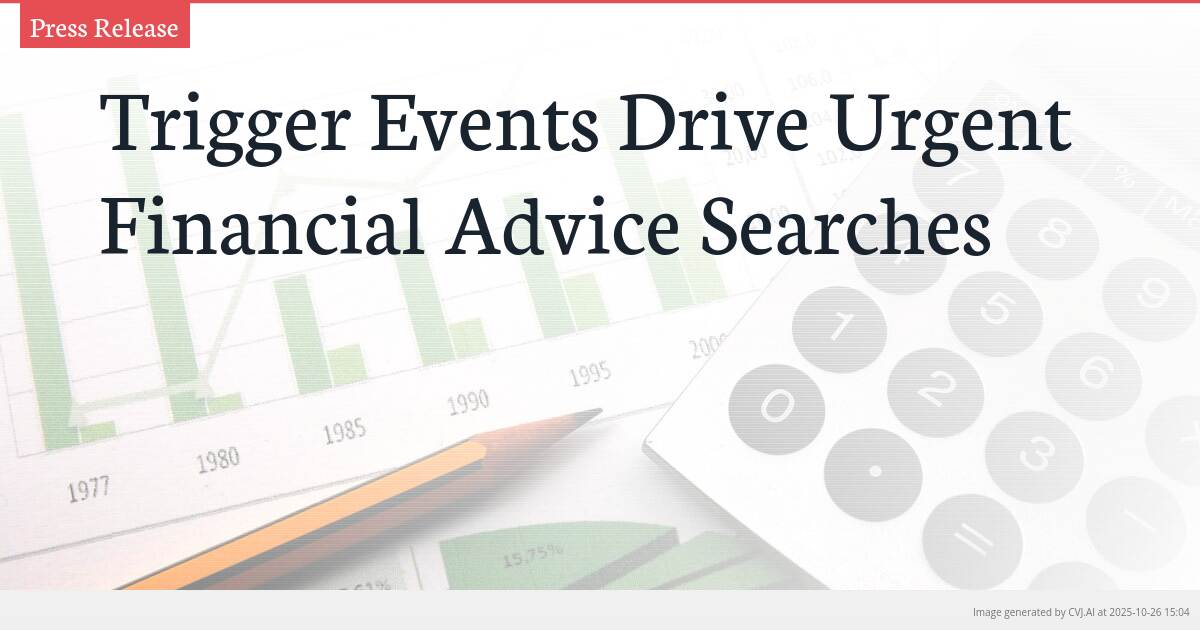This summary text is fully AI-generated and may therefore contain errors or be incomplete.
Introduction
Life events such as recessions, health emergencies, or inheritances frequently trigger immediate searches for financial guidance. This underscores the necessity for financial advisors to maintain a strong digital footprint before clients face these critical moments, with research showing 92% of Millennials and 61% of Boomers validate referrals online before engaging professional services.
Key Points
- 92% of Millennials and 61% of Boomers validate financial advisor referrals through online research before engaging.
- Trigger events such as recessions, health scares, or inheritances create immediate demand for financial advice.
- A strong digital presence is essential for advisors to build trust and be discovered during urgent client searches.
The Psychology of Financial Trigger Events
According to Ryan Krystopowicz, CFA, Director of Client Solutions, life’s unpredictable moments often serve as catalysts for urgent financial decision-making. Economic downturns, unexpected health crises, and sudden inheritances create immediate pressure for individuals to seek professional guidance. These trigger events represent critical junctures where financial advisors have the opportunity to provide essential support and direction.
The timing of these events creates a unique challenge for both consumers and financial professionals. When facing financial uncertainty or sudden wealth transitions, individuals typically conduct rapid research to find trustworthy advisors. This compressed decision-making window means advisors must establish their credibility and accessibility well before these pivotal moments occur, positioning themselves as reliable resources during times of financial stress.
The Digital Validation Gap Between Generations
The research highlighted by ETF Trends reveals a significant generational divide in how potential clients vet financial advisors. With 92% of Millennials conducting online validation of advisor referrals, compared to 61% of Boomers, the data underscores the critical importance of digital presence across demographic segments. This gap represents both a challenge and opportunity for financial professionals seeking to build comprehensive client relationships.
Millennials’ near-universal reliance on digital verification reflects their comfort with online research and social proof mechanisms. Meanwhile, the majority of Boomers also engage in online validation, demonstrating that digital credibility has become essential across age groups. Financial advisors must recognize that regardless of client demographics, their online presence serves as the first line of trust-building in today’s interconnected financial landscape.
Building Trust Through Digital Presence
Establishing a compelling digital presence requires more than mere visibility—it demands consistent demonstration of expertise and reliability. As Ryan Krystopowicz emphasizes through ETF Trends, advisors must cultivate online platforms that showcase their knowledge, experience, and client-focused approach. This digital footprint becomes the foundation upon which potential clients build trust before making contact.
The path to trust begins with the first click, where prospective clients encounter an advisor’s digital persona. This initial interaction sets the tone for the entire professional relationship. Financial advisors who invest in comprehensive digital strategies—including informative content, client testimonials, and professional credentials—position themselves to capture clients during critical trigger events when search behavior intensifies and decision timelines compress.
For financial professionals operating in the ETF space and broader financial services industry, the imperative is clear: digital presence must precede client need. By establishing robust online platforms that demonstrate expertise and build credibility, advisors can ensure they’re discoverable and trustworthy when life events drive individuals to seek immediate financial guidance.
📎 Read the original article on etftrends.com

